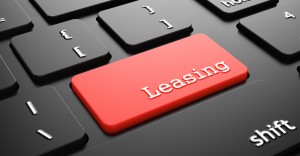 Although completely vital to business operations, IT remains an expensive outlay, and companies need to build a responsive, cost-effective framework for the future. As part of this strategic plan, businesses are using new technologies and payment options to cut their IT operating costs – which is where leasing can help.
Although completely vital to business operations, IT remains an expensive outlay, and companies need to build a responsive, cost-effective framework for the future. As part of this strategic plan, businesses are using new technologies and payment options to cut their IT operating costs – which is where leasing can help.
What is leasing?
In exactly the same way that individuals or businesses can lease brand new cars on a hire-purchase basis, organisations can choose to spread the cost of their IT hardware purchases using leasing agreements. A typical leasing agreement lasts for two to three years, at the end of which time the organisations can choose to return the equipment, extend the lease, or to pay a final purchase fee and acquire ownership.
Why lease?
Leasing provides a cost-effective way for cash-poor organisations to acquire the latest technologies (and associated benefits) without the full outlay of a new purchase. They can access new computers, servers and other infrastructure hardware immediately, and spread the cost over several years.
A lease also creates real flexibility when attempting to deal with the issue of usable lifespans, because a computer will only continue to perform to expected levels for so long before it needs to be replaced. With an “owned” machine your business retains the asset at the end of its usable life, creating a problem for the accounts department when you want to dispose of machines that no longer fulfil their required tasks, but which continue to show on the corporate balance sheet.
With leased hardware, machines can be refreshed simply by renewing the agreement, or taking out another contract. In this way businesses can institute cost-effective upgrades without any capital expenditure. Leasing changes the IT expenditure model from capital expenditure to operational expenditure, helping to improve company cash flow.
Potential caveats with leasing?
Although leasing offers businesses strong, flexible ways to approach computer hardware, there are some caveats to consider. In the long term lease costs are invariably higher than outright purchases; the difference is that leasing allows businesses to extend this cost over the course of years which may actually be more valuable in the long term.
It is also important to remember that a leasing agreement is the same as any other finance agreement – you are legally responsible for ensuring all payments are made on time, according to the schedule contained in the agreement. Failure to honour the agreement could result in legal action, damages and associated tarnishing of your brand.
Who is leasing for?
Unless your business is using computer equipment that has a very long lifecycle, there is a good chance that you will benefit from leasing. Bearing the caveats above in mind, leasing nevertheless adds an additional layer of flexibility to business IT provisioning. It could help your organisation become more agile and responsive – as well as being better placed to weather a potential repeat of the economic downturn, or any other external factors in your marketplace which could affect your business’ profit margins.
Leave a Reply